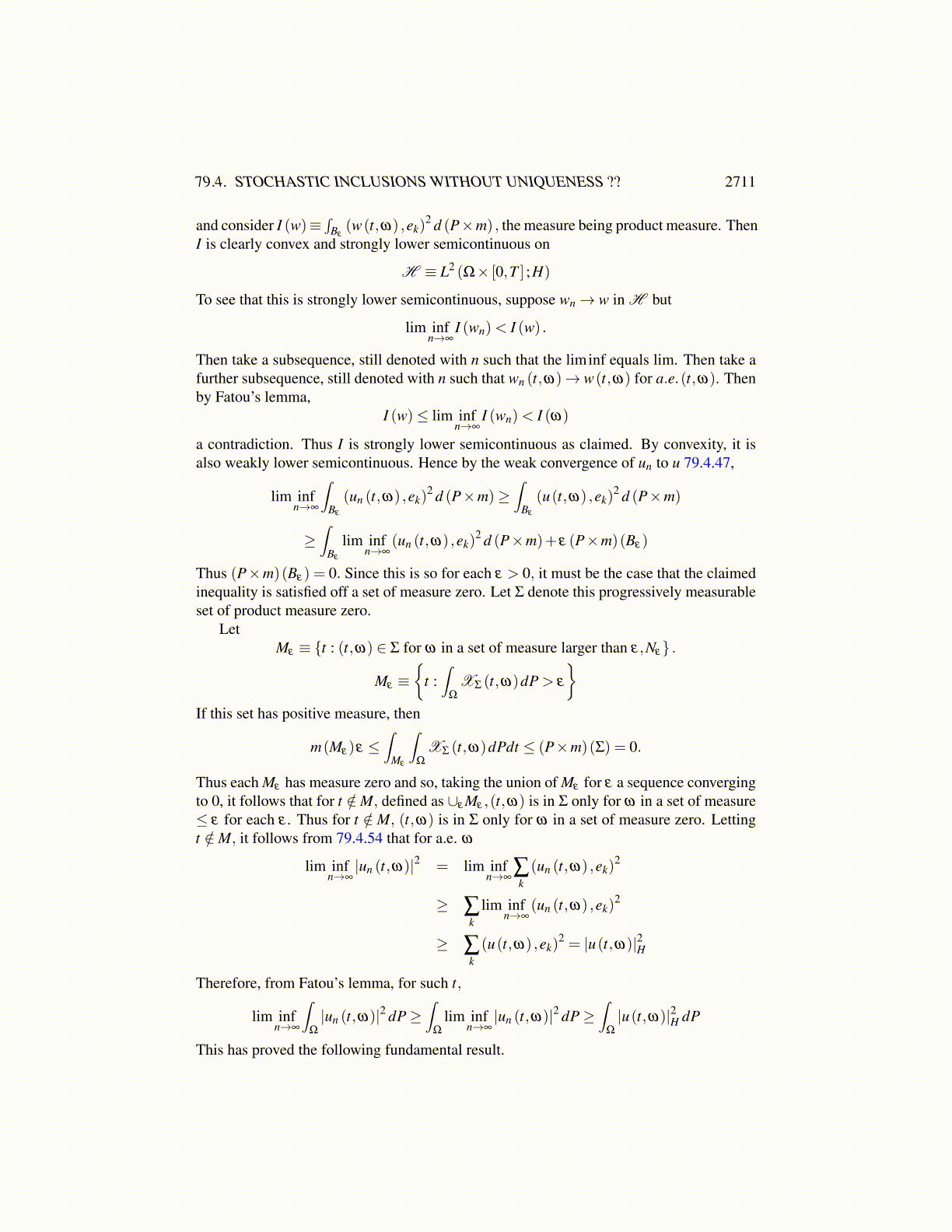
79.4. STOCHASTIC INCLUSIONS WITHOUT UNIQUENESS ?? 2711
=∫
Ω
∫ T
0
∫ T
s
⟨1n
Fun (s,ω) ,φ (r,ω)
⟩drdsdP
+∫
Ω
∫ T
0
∫ T
s⟨zn (s,ω) ,φ (r,ω)⟩drdsdP
=∫
Ω
∫ T
0
⟨1n
Fun (s,ω) ,∫ T
sφ (r,ω)dr
⟩dsdP
+∫
Ω
∫ T
0
⟨zn (s,ω) ,
∫ T
sφ (r,ω)dr
⟩dsdP
Now (s,ω)→∫ T
s φ (r,ω)dr is also in U and so the above weak convergences and esti-mates yield that in the limit, this becomes∫
Ω
∫ T
0
⟨z(s,ω) ,
∫ T
sφ (r,ω)dr
⟩U ′,U
dsdP
=∫
Ω
∫ T
0
⟨∫ r
0zds,φ (r,ω)
⟩U ′,U
drdP
Thus un must converge in U ′ to
u0−∫ (·)
0zds+
∫ (·)
0f ds+
∫ (·)
0ΦdW
Therefore, when passing to a limit, one obtains from 79.4.44
u(·)−u0 +∫ (·)
0zds =
∫ (·)
0f ds+
∫ (·)
0ΦdW in U ′
ω for a.e. ω (79.4.48)
All functions are continuous except the first so we define it so that the above holds pointwisein t. Thus, with 79.4.44, off a set of measure zero,
un (t)−u0 +1n
∫ t
0Funds+
∫ t
0znds =
∫ t
0f ds+
∫ t
0ΦdW
u(t)−u0 +∫ t
0zds =
∫ t
0f ds+
∫ t
0ΦdW (79.4.49)
Note that these are now equations which hold for each t for ω off a set of measure zero.Then it follows that for a.e. ω∥∥∥∥un (t)+
∫ t
0znds−
(u(t)+
∫ t
0zds)∥∥∥∥
U ′
=
∥∥∥∥1n
∫ t
0Funds
∥∥∥∥U ′≤∫ T
0
1n||Fun||ds (79.4.50)
Let nk > k be the first index such that if l ≥ nk, then∫Ω
∫ T
0
1l||Ful ||dsdP < 4−k